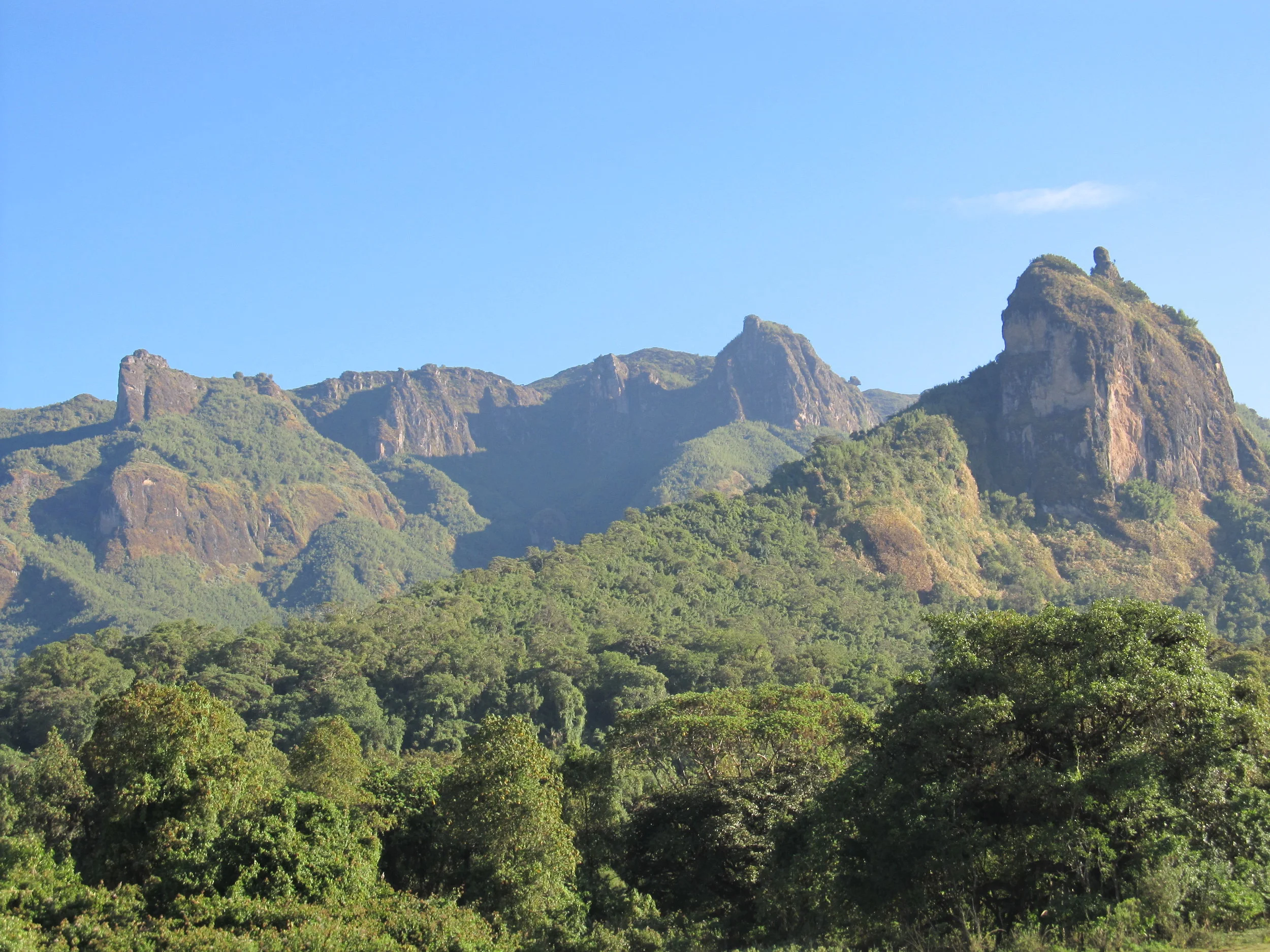Ethiopian wolf
Considered the rarest canid species in the world, the largest population of Ethiopian wolves are found on the Sanetti Plateau and Web Valley in Bale Mountains National Park.
Listed as a potential World Heritage site, UNESCO estimated that more species would go extinct if the biodiversity of the Bale Mountains were lost than any other area of equivalent size on the globe. An impressive 26% of the mammals found in the Bale Mountains are endemic, including the largest remaining populations of mountain nyala (Tragelaphus buxtoni) and the Ethiopian wolf (Canis simensis). Additionally, more than 1,300 species of flowering plants are found in the region; of these, 163 are known endemics to Ethiopia, 23 are found only in the Bale Mountains, and at least 400 are used for medicinal purposes. The large assemblages of flora and fauna in the Bale Mountains can be attributed to the compilation of unique ecosystems that occur along elevation gradients. The dominant systems are the Afro-alpine (> 3,700 meters a.s.l.), sub-alpine and ericaceous (3,200 to 3,700 meters a.s.l), upper Afro-montane forests (2,300 to 3,250 meters a.s.l.), and lower Afro-montane woodlands (1,500 to 2,300 meters a.s.l.).
The Bale Mountains are particularly important as a source of water. Moisture from the Indian Ocean reaches the southeastern slopes of the Bale Mountains as precipitation, charging more than 40 perennial streams, four major rivers, more than two dozen alpine lakes and numerous springs that provide water to more than 12 million people throughout Ethiopia and Somalia. Moisture produced also nourishes the Harenna Forest on the southern escarpment, one of the few tropical cloud forests found in East Africa. Although the Harenna Forest remains largely intact, it is extremely vulnerable to new human settlements and climate change.
There is a clear need to understand how biodiversity relates to the social-ecological systems in the Ethiopian highlands and how the loss of biodiversity will impact the ecosystem services provided. The focus of TMF’s support in the Bale Mountains has been to improve the understanding of these complex relationships, and to identify key environmental characteristics that support ecosystem processes, functions, and services. In the Bale Mountains, biodiversity is under threat from at least two drivers: increasing human encroachment and climate change. Human encroachment includes relatively minor impacts to the landscape (such as harvesting honey) to more significant landscape modifications (such as clearing forests for agriculture). All of these incursions affect biodiversity to some degree. Humans have co-evolved with these landscapes, and their provision of ecosystem services has both positive and/or negative consequences for the region’s biodiversity. However, the rapid growth of human populations in the region has resulted in unsustainable demand for natural resources, and the degradation and reduction of these ecosystems have already reached a critical threshold in many areas.
The Murulle Foundation supports holistic and integrative approaches that not only focus on conserving the biodiversity of the Bale Mountains but also highlight strategies that may be replicated across mountain systems worldwide. Broad-scale research that is embedded with multiple fine-scale studies provides a deeper understanding of the complex relationships between social-ecological systems and highlights areas that are most vulnerable to agents of global change. The importance in strengthening resilience of social-ecological systems cannot be overemphasized, and The Murulle Foundation strongly believes that this is best achieved by maintaining and protecting biodiversity.



